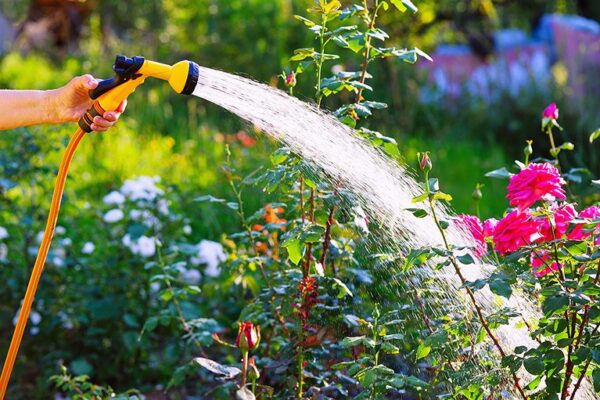How to Care for a Rubber Tree Plant Easily
The rubber tree, scientifically known as Ficus Elastica, is a species of evergreen plant in the fig genus. It belongs to the family Moraceae and is native to the rainforests of India and tropical regions of Asia. This species is particularly valued for its latex, which is used in the production of rubber, hence its name. You will discover here how to care for a rubber tree plant. With proper care, the rubber tree can grow into an impressive indoor specimen, making it a cherished choice among plant lovers worldwide.
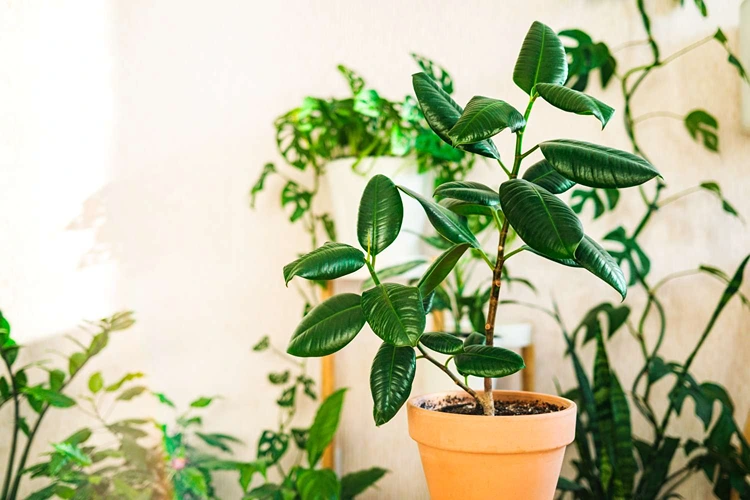
In addition to its practical uses, the rubber tree has gained popularity as a decorative houseplant due to its striking foliage and adaptability to indoor environments. Its large, glossy leaves, which can range from deep green to variegated patterns, add a touch of tropical elegance to any space.
Potting
When potting your rubber tree, opt for a slightly snug fit rather than a spacious pot. Choose a container with about 2 inches of space around the diameter, preferably made of unglazed earthenware to allow proper soil moisture evaporation. Ensure the pot has drainage holes to prevent water logging, which can be detrimental to the plant’s health.
Place your plant about 3 inches below the pot’s rim, filling the space with soil and ensuring the plant remains upright. Repotting may cause leaf drop initially as the plant adjusts to its new environment.

How to care for a Rubber Tree Plant
Light
Rubber trees thrive in bright, indirect light and are sensitive to drafts and extreme temperatures. Avoid placing them near vents or AC units, as drafts can lead to leaf loss or plant death. Optimal indoor temperatures range from 60-70 degrees Fahrenheit. Variegated rubber tree species require more light due to lower chlorophyll levels in their leaves, while dark spots can cause stretching (“leggy” growth). Placing a mirror nearby or painting the room white can enhance brightness for the plant.
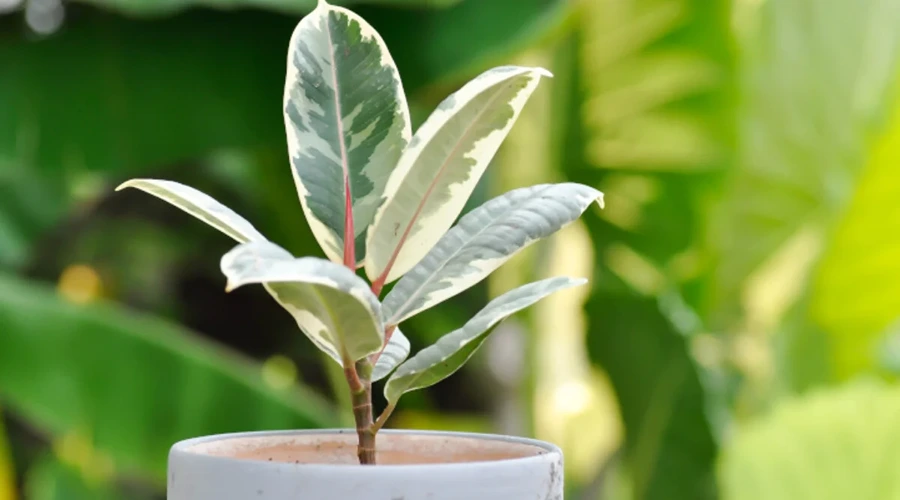
Watering
Maintain a consistent watering schedule to prevent both under and overwatering. Rubber trees prefer to dry out slightly between watering but should not become bone dry. Water thoroughly, allowing excess water to drain, but avoids water logging to prevent root rot. Adjust watering frequency based on climate and humidity levels, ensuring the top 2/3 of the soil dries out before watering again.

Pruning
To control growth and promote bushiness, prune your rubber tree regularly. Pinch off new growth tips to encourage branching or trim branches to shape the plant. Pruning in spring and summer fosters healthy growth, while reducing fertilization in fall and winter supports the plant’s natural growth cycle.

Fertilizing
Feed your rubber tree with fertilizer during the growing season (spring/summer) but reduce or halt fertilization in fall and winter. Fertilize every other watering session for optimal growth.
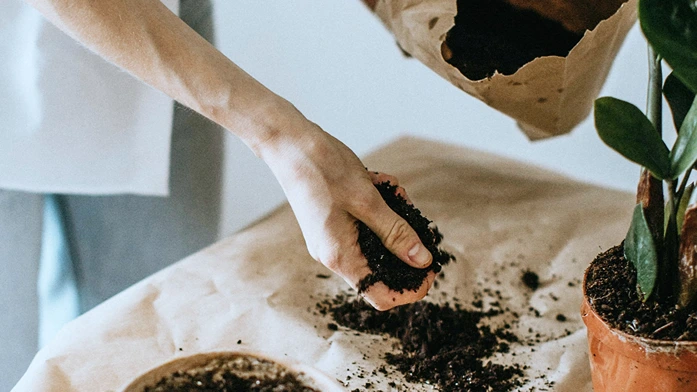
Leaf Drop
Leaf drop is normal during repotting or relocation due to shock. However, excessive leaf loss may indicate overwatering or insufficient light. Yellowing leaves, known as Chlorosis, signal a lack of chlorophyll production and may result from overwatering or inadequate light. Check for root rot if yellowing persists, and adjust watering and light conditions accordingly.
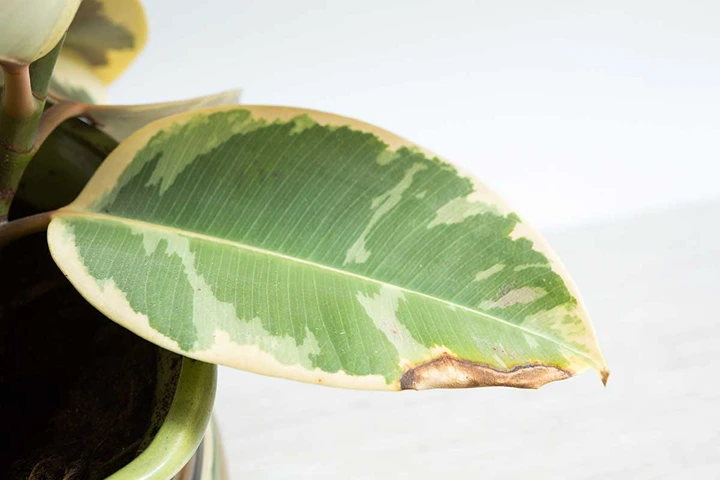
Types of Rubber plant
If you’re looking to expand your rubber plant collection, here are ten fantastic options to consider:
- Robusta (Ficus elastica ‘Robusta’)
This variety is quite common and features deep green, waxy leaves. It can grow tall with the right care, making it ideal for a corner spot by a window. It thrives in bright, indirect light and can reach heights of up to 8 feet.
- Tricolor (Ficus elastica ‘Tricolor’)
If you’re drawn to colorful houseplants, the Tricolor is perfect for you. Its leaves display a vibrant mix of cream, pink, and green hues. New leaves emerge red before maturing into their full color spectrum. It also prefers bright, indirect light and can grow up to 6 feet tall.
- Tineke (Ficus elastica ‘Tineke’)
A newer addition to rubber plant varieties, the Tineke boasts variegated leaves in shades of green and cream, sometimes with hints of pale yellow. It requires bright, indirect sunlight to maintain its striking appearance and can grow up to 13 feet tall.
- Decora (Ficus elastica ‘Decora’)
This variety stands out for its dark, thick leaves that can grow larger than other rubber plant varieties. It thrives in bright, indirect sunlight and can reach heights of up to 6 feet.
- Doescheri (Ficus elastica ‘Doescheri’)
Featuring uniquely patterned leaves with splashes of gray, cream, and green, the Doescheri adds a touch of whimsy to any space. Its pink stalks and midribs contribute to its distinctive appearance. Like others, it prefers bright, indirect light and can grow up to 13 feet tall.
- Yellow Gem (Ficus elastica ‘Yellow Gem’)
Unlike the typical dark foliage of rubber plants, the Yellow Gem showcases golden-green leaves that brighten up any room. It thrives in bright, indirect light and can reach heights of up to 6 feet.
- Burgundy (Ficus elastica ‘Burgundy’)
With its deep green leaves tinged with burgundy undertones, the Burgundy variety adds a rich, dramatic touch to indoor spaces. Its foliage appears leathery and is equally stunning on both sides. Bright, indirect sunlight is best for this variety, maintaining its color vibrancy.
- Abidjan (Ficus elastica ‘Abdijan’)
Similar to the Burgundy variety, the Abidjan features dark leaves with hints of deep red, lending it a luxurious appearance. It thrives in bright, indirect sunlight and can grow up to 6 feet tall.
- Melany (Ficus elastica ‘Melany’)
This compact variety offers smaller leaves and a denser growth pattern compared to others. Its leaves have a bronze tint and are often trained to grow multiple stems, resembling a small tree. Bright, indirect sunlight is essential for its growth, and it typically reaches heights of up to 6 feet.
- Red Ruby (Ficus elastica ‘Red Ruby’)
For those who adore vibrant colors, the Red Ruby is a standout choice. Its leaves feature strokes of purple, red, and white, with stems and ribs in a striking reddish-pink shade. Bright, indirect sunlight is ideal, and it can grow up to 6 feet tall. Don’t forget to admire the captivating undersides of its leaves as well.Top of Form



